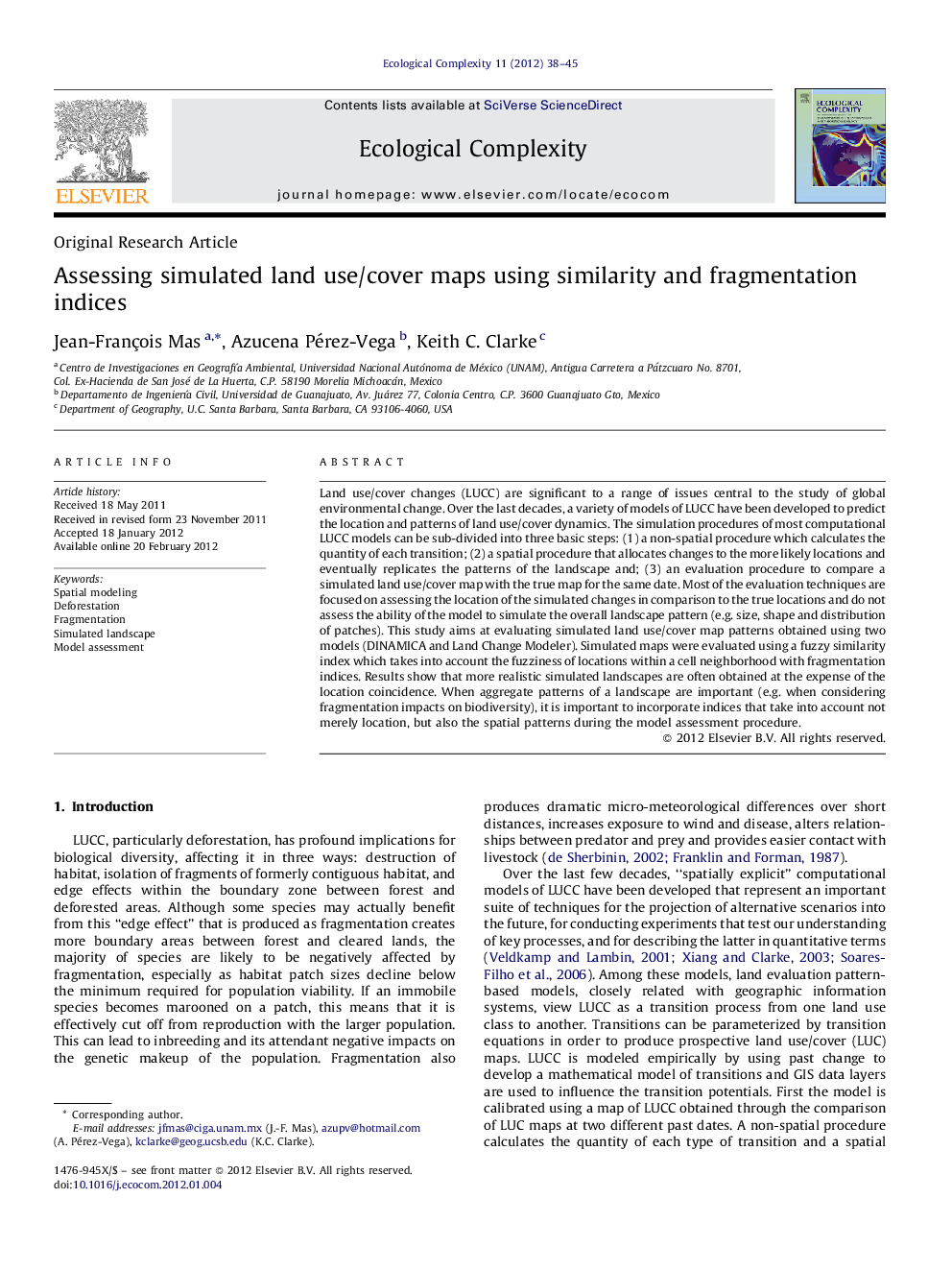| Article ID | Journal | Published Year | Pages | File Type |
|---|---|---|---|---|
| 4372536 | Ecological Complexity | 2012 | 8 Pages |
Abstract
Land use/cover changes (LUCC) are significant to a range of issues central to the study of global environmental change. Over the last decades, a variety of models of LUCC have been developed to predict the location and patterns of land use/cover dynamics. The simulation procedures of most computational LUCC models can be sub-divided into three basic steps: (1) a non-spatial procedure which calculates the quantity of each transition; (2) a spatial procedure that allocates changes to the more likely locations and eventually replicates the patterns of the landscape and; (3) an evaluation procedure to compare a simulated land use/cover map with the true map for the same date. Most of the evaluation techniques are focused on assessing the location of the simulated changes in comparison to the true locations and do not assess the ability of the model to simulate the overall landscape pattern (e.g. size, shape and distribution of patches). This study aims at evaluating simulated land use/cover map patterns obtained using two models (DINAMICA and Land Change Modeler). Simulated maps were evaluated using a fuzzy similarity index which takes into account the fuzziness of locations within a cell neighborhood with fragmentation indices. Results show that more realistic simulated landscapes are often obtained at the expense of the location coincidence. When aggregate patterns of a landscape are important (e.g. when considering fragmentation impacts on biodiversity), it is important to incorporate indices that take into account not merely location, but also the spatial patterns during the model assessment procedure.
Related Topics
Life Sciences
Agricultural and Biological Sciences
Ecology, Evolution, Behavior and Systematics
Authors
Jean-François Mas, Azucena Pérez-Vega, Keith C. Clarke,
